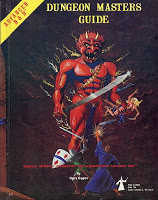 The “classic three” division that began with AD&D– Player’s Guide, Game Master’s Guide, Monster Book– has been taken as a sort of gospel by a number of other games (although certainly not all). I’ve explored this somewhat in an earlier post that focused on the player’s guide. But now I’d like to turn my attention to the game master’s guide.
The “classic three” division that began with AD&D– Player’s Guide, Game Master’s Guide, Monster Book– has been taken as a sort of gospel by a number of other games (although certainly not all). I’ve explored this somewhat in an earlier post that focused on the player’s guide. But now I’d like to turn my attention to the game master’s guide.
Just what function does it serve?
As I indicated in my thoughts on the player’s guide, I think that most of the actual rules of play belong there. After all, they are the players. And the players, it seems to me, need to know how to play. So that’s where the rules for combat, and spells, and (obviously) character creation and the like need to be. The monster book is self-explanatory; it’s something that could, in theory, be folded into a game master’s book, but due to logistical reasons, there’s a compelling argument to break it out.
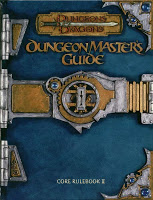 To understand the role of the game master’s book, on the other hand, requires a brief analysis of the game master’s role. The game master is referee and interpreter of the rules, sure. But in an old-school type game, he is also the person who creates the adventure and the campaign in which it takes place. Newer versions of the game tend to rely on pre-published adventures and settings, simply because there’s a relatively high amount of preparation time required to make sure the encounters are properly scaled, etc. (That is not intended as any sort of derogatory remark, I should add; it’s simply a function of the more “even” approach to scenario design built into the new rules.)
To understand the role of the game master’s book, on the other hand, requires a brief analysis of the game master’s role. The game master is referee and interpreter of the rules, sure. But in an old-school type game, he is also the person who creates the adventure and the campaign in which it takes place. Newer versions of the game tend to rely on pre-published adventures and settings, simply because there’s a relatively high amount of preparation time required to make sure the encounters are properly scaled, etc. (That is not intended as any sort of derogatory remark, I should add; it’s simply a function of the more “even” approach to scenario design built into the new rules.)
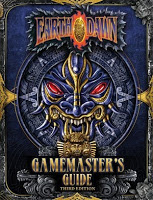 There, I think, is where a game master’s book can shine. There will, of necessity, be certain game-mechanics type material that isn’t appropriate for the players to have everyday access to. (Although, as an aside, I think I can say with complete certainty that I have never used the “Detection of Invisibility Table” on p. 60 of the AD&D DMG; there seems to be a lot of “flyover country” in there, and that’s a phenomenon I’d like to avoid, hopefully with better organization.) And a certain amount of Game Mastering 101 is probably needed, although in Emprise!™ it will probably find its way into the boxed set that is specifically aimed at beginners.
There, I think, is where a game master’s book can shine. There will, of necessity, be certain game-mechanics type material that isn’t appropriate for the players to have everyday access to. (Although, as an aside, I think I can say with complete certainty that I have never used the “Detection of Invisibility Table” on p. 60 of the AD&D DMG; there seems to be a lot of “flyover country” in there, and that’s a phenomenon I’d like to avoid, hopefully with better organization.) And a certain amount of Game Mastering 101 is probably needed, although in Emprise!™ it will probably find its way into the boxed set that is specifically aimed at beginners.
But I feel that the best use of the limited number of pages in a game master’s book is practical tools to assist in the creation both of scenarios and campaign settings. There will be lists of magical items and treasures, to be sure. In fact, I’m putting together an entire section just on non-magical treasure; it’ll be a (hopefully) quick and easy way to put together treasure troves that are much more interesting than simply “a chest with 5,000 g.p. inside”. And I think the potential of treasure maps has been long overlooked.
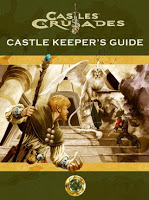 But also a running commentary on some of the implications built into that player’s guide, and how they impact the decisions the game master must make. For example, the description of the thief class takes for granted the existence of a thieves’ guild or similar organization. How does the game master handle such a thing? What are the consequences of not having one? The same applies to most of the classes, and the races also have their own setting-impacting assumptions that must be dealt with. What will happen to a campaign that allows drow, deep gnomes, and gray dwarves? What happens to a campaign that doesn’t allow them?
But also a running commentary on some of the implications built into that player’s guide, and how they impact the decisions the game master must make. For example, the description of the thief class takes for granted the existence of a thieves’ guild or similar organization. How does the game master handle such a thing? What are the consequences of not having one? The same applies to most of the classes, and the races also have their own setting-impacting assumptions that must be dealt with. What will happen to a campaign that allows drow, deep gnomes, and gray dwarves? What happens to a campaign that doesn’t allow them?
Plus I want to take the concept of the Outer Planes out of the realm of hard-and-fast rules and turn them into something much more setting specific. There’s no earthly reason that just because Oerth has the “wheel of the outer planes” as a feature, that Toril needs to have the same thing as well. Or Athas. Or any home-grown campaign. Out will go planar dogma, and in will go creative seeds for different ways to approach the outer planes (and, once more, advice on the consequences of taking things in different directions; what do you do with an ice para-elemental if you don’t have para-elemental planes in the first place?).
I’m also coming to the conclusion that a full-blown separate book on gods and religions isn’t required. Again in keeping with the idea that such things are much better when they’re campaign-specific, I might include one or two “sample pantheons” (probably of the better-known deities like the Greek or Norse), along with detailed examples of special powers they grant to their priests, what their temples look like (imagine a work-up on the order of the Temple of the Eye from Hall of the Fire Giant King, and you’ll understand what I’m thinking about) and ample commentary on the design of such things. Give some examples, give some advice, and push ’em into the lake. THAT’s how I want to approach the vast majority of campaign design in this book.
On the level of the individual adventure, the toolbox concept will once again come into play. Sure, there will be advice on basic dungeon design, theory on sandboxes and megadungeons and and set-piece encounters and the use of plot. Again and again and again chock full of advice on how the choices the game master makes early on might have an impact down the line.
But I’m also a big fan of things that are immediately practical. I’m not sure about a random dungeon generator (those things are never quite as neat and useful in reality as they seem to be on paper), but certainly some random tables are in order to help with certain design elements; being able to design memorable (but hopefully not cardboard) NPCs on the fly, for example. Traps and tricks. Stand-out dungeon design elements; quick ways of working up details for shrines, statues, bottomless chasms, humanoid lairs, and so forth. More than “mere” dungeon dressing… well, yeah, I’m a big fan of that kind of stuff (and I love dungeon dressing too).
So, anyway, that’s where my mind is currently on the subject of the game masters guide, it’s function and contents. Now, back to work with me on this rainy and windy Saturday afternoon (we’ve already had one tree go down, which missed the house by about five feet, I might add).


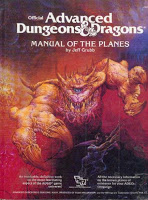
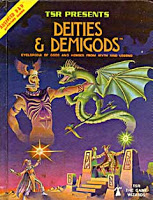







Regarding the Deity-Creation section: if you're going the "example" route, I'd suggest that as well as providing a couple of well-known pantheons, you include at least one built from the ground-up, along with some design notes explaining why certain decisions have been made.
For example, if you're creating Two-Faced Jornil, Dancer in Shadows, Master of Flies/Mistress of Worms, who walks on wheels and changes from good to evil with the phases of the moon — what purpose does this god/goddess serve in the game? How would his/her existence likely impact on the players? What are the societal implications of having to worship a morally inconstant major deity?
I don't mean to suggest that every little thing should have to have a planned purpose or function; sometimes it's good to have campaign elements just because they feel like they might be cool. But some design guidance as to the sorts of things that might bear thinking about, and possible implications of their inclusion, might be useful to prospective campaign designers.
It's almost "jumping the shark" to walk a new DM through planetary cosmology, theives guilds, and world building, yet negelect a starting dungeon and map key (how do you notate a secret door?) for 1st level characters!~ I'm thinking Red Box Mentzer edition as the best example.
Show the people who buy this book what you can do with a simple peice of graph paper! Better yet…just include the 1st level of your mega-dungeon!
The gods, pantheon, thieves guild can be shown in relation to the dungeon (shrine to an evil god…portal to the astral…thieves guild hide-out, etc.
I'm really looking forward to this, more than any OSR to date.
UWS… shhhh. Don't make me spill *all* the beans just yet.
I'm still firmly in the camp of putting all this stuff in the player's book. Organize it in such a way that "players" realize they don't need to read it all; but, don't force a second book purchase on people.
With regards to religion, I think the important part is just that- religion. Not just who is worshiped, but how they are worshiped, and how does they're faith impact they're worshipers, and in particular the player characters. What duties do priests have besides worship, perhaps they are judges, scholars and teachers like the druids? What is the relationship between Church and State? Does the church have any enemies that priests are expected to find and destroy? Of course in a fantasy world there are other considerations like what kind of an impact the deities' actions have on the world, under what circumstances will they intervene and so forth.
One thing in particular that I don't like is the assumption that each priest will worship only one god out of a pantheon. Instead of having one religion you have dozens of smaller religions. This might be the case (mystery cults, for one thing), but in many cases the cleric will be devoted to the pantheon as a whole.
I like the idea of having advice about the planes, rather than merely a specific set of planes, and this is speaking as a big fan of the Great Wheel.
How much (if any) will the design philosophies and structures of D20 3E & 4E have on Emprise? Also, since this is a Gygaxian what-if, will there be any influences from his non-D&D RPG systems? Specifically, the Dangerous Journeys, Lejendary Adventure, and Castles & Crusades systems?
How much (if any) will the design philosophies and structures of D20 3E & 4E have on Emprise?
None, if I can avoid it. If anything D20-ish does creep in, it'll be either unconscious or coincidental. I've never played that version.
Also, since this is a Gygaxian what-if, will there be any influences from his non-D&D RPG systems? Specifically, the Dangerous Journeys, Lejendary Adventure, and Castles & Crusades systems?
You might want to look back on some of the earlier posts with the label "UE" for some specifics, as well as the designer's notes on my Jester class pdf (free download available over to the right). Most certainly, I'll be taking inspiration from the C&C skill system (which he specifically mentioned as close to what he had envisioned for his 2E D&D), as well as DJ, as that was Gygax's first foray after his ouster from TSR. Not so much LA.
To me the DMG should also have behind-the-curtain material which the players can recieve on a need-to-know basis. I always put the saving throws out of their reach, just to keep that 'unknown suspence' in the air. In dramatic moments it is very effective. Also, if not the gods themselves, then state any special ability granted to worthy servants should be kept there, so players don't pick gods according to 'goodies'- as a player once discussed in my table. Also other useful stuff like how ethereal or astral creatures interact with material things/magic, and things of the sort. In addition, if the campaign is meant to be pseudo-medieval, a list of reference would be once- occupations, military rank and formations, siege weapons, culture, terminology, slang, superstition, and so forth. The DMG shoud give the tools to add the spice you want to your game, specially a gritty, old-school game.
As a final note, I'd add that all of these should be as quick and easy to read, straight to the
point references. The DMG should have the most vital info first and afterwards the more lengthly and not immediately important sources. An appendix with simple trivia, and so forth. DMG is a toolbox.